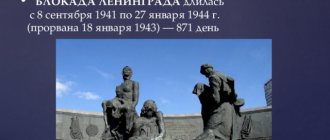Class hour for Cosmonautics Day - ideas for discussion with schoolchildren (5th, 6th, 7th, 8th grade)
For schoolchildren in grades 5, 6, 7, 8, it is much easier to organize and conduct a class hour for Cosmonautics Day than for first-graders. Teenagers are able to concentrate attention on specific things longer, express their position more actively, and better remember and analyze information. During the “cosmic” class hour, the teacher can talk about interesting events, processes and people, without fear of rapid fatigue of the listeners. Interesting ideas for discussion in grades 5, 6, 7, 8 during class for Cosmonautics Day:
- working conditions for astronauts, their food, uniforms, preparation for flights;
- rockets, spaceships and stations, satellites and lunar rovers;
- Solar system, features of different planets, stars, other celestial bodies;
- pioneers in the field of astronautics, scientists, testers, associates;
- animals that first left our planet on board a spacecraft;
Just as in working with children, teenagers need to not only talk about important things, but also show documentary evidence and legendary faces, include videos from thematic archives, and demonstrate fragments of films about the first steps on the path to discovery. The role of musical accompaniment should not be diminished. The songs “Anthem of the Cosmonauts”, “Captain of Interplanetary Spaceships”, “Do You Know What Kind of Guy He Was” are suitable for the presentation.
An unusual idea for a class hour dedicated to Cosmonautics Day
It is not enough to choose ideas for discussion with schoolchildren (grades 5-8) for the Cosmonautics Day class hour. It is necessary to fill the lesson with exciting presentations, interesting quizzes, broadcast of documentary footage and fantastic props. You can invite students to assemble together a model of a large rocket using scrap materials brought from home. Or you can distribute scientific assignments or research work to enthusiasts a few days before class. During the lesson, all other schoolchildren will be interested in listening to the children’s reports.
A great idea for a class hour on Cosmonautics Day is an invited guest. Surely at least one student has a father, grandfather, uncle or neighbor who is directly related to the topic of the lesson. It would be a good idea to invite in advance a person who can tell first-hand interesting facts about space discoveries, flying vehicles, plans for the space future and the activities of entire teams of scientists.
Scenario and presentations for a class hour dedicated to Cosmonautics Day (grades 9, 10, 11)
For a class hour for Cosmonautics Day in grades 9, 10, 11, it would not be amiss to prepare a visual presentation about the founders of astronautics, space exploration, space experiments with their successes and failures. High school students should prepare in advance for the thematic lesson in order to know the answers to simple but very important questions:
- Who was Yuri Gagarin?
- How many earthlings have already been to space?
- Who invented the first telescope?
- What is the name of the first female astronaut?
- What is the sequence of planets in the solar system?
- Which animal became a space pioneer, etc.
A class hour dedicated to Cosmonautics Day in the 11th grade will not be the discovery of new facts for schoolchildren, but rather the consolidation of old knowledge about the great field of science and technology.
Presentation options for a class hour dedicated to Cosmonautics Day
The topic of the presentation for the class hour dedicated to Cosmonautics Day in grades 9, 10, 11 should be determined in advance, based on the age category, school curriculum, interests and hobbies of teenagers. But some options will be of interest to all high school students, without exception. Eg:
- “56 years of feat.” Presentation about Yuri Gagarin's flight and his other achievements;
- "Journey into Space." Presentation for a class hour dedicated to Cosmonautics Day about the first successful and unsuccessful experiments;
- "Our space, our Universe." Presentation about the solar system, planets, satellites, etc.;
- "Through hardship to the stars". Presentation about great personalities who devoted their lives to the study and exploration of space;
- "Heroic Animals" Presentation about the first animals sent into space without people or with escorts;
- "Problems of space exploration." Presentation about the grandiose space experiments of the two great powers, the USA and Russia;
- “April 12 is Cosmonautics Day.” Presentation on the historical background of the celebration;
- "Conquerors of Space." Presentation about Tereshkova, Leonov, Sharipov, Volkov, Romanenko, Suraev.
Class hour for Cosmonautics Day in grades 1-4, 5-8 and 9-11 is a fascinating and educational lesson with elements of fantasy and heroism. Especially if it is filled with presentations, discussions, demonstrations of video and audio materials, viewing drawings and crafts for a class hour dedicated to Cosmonautics Day.
Class hour dedicated to the 50th anniversary of Cosmonautics Day
Class hour dedicated to the 50th anniversary of Cosmonautics Day.
class teacher -
1. Guys, we all know that April 12 is Cosmonautics Day. This year we celebrate the 50th anniversary of the first manned flight into space, which was accomplished by the well-known... Yu. Gagarin.
Cosmonautics
(from the Greek κόσμος - Universe and ναυτική - the art of navigation, ship navigation) - the process of exploring outer space using automatic and manned spacecraft. The term was proposed by one of the pioneers of Soviet rocketry, G. E. Langemak.
Founder of Soviet cosmonautics - () - Russian Soviet scientist and inventor in the field of aerodynamics, rocket dynamics, aircraft and airship theory; founder of modern cosmonautics.
An outstanding designer of rocket and space systems - (1906 - 1966) S.P. Korolev is the creator of Soviet rocket and space technology, which ensured strategic parity and made the USSR an advanced rocket and space power, and a key figure in human space exploration, the creator of practical astronautics. Thanks to his ideas, the first artificial Earth satellite and the first cosmonaut, Yuri Gagarin, were launched.
Astronaut
(in Russia),
astronaut
(in USA),
rescue naut
(in France),
taikonaut
(in China) or
gaganaut
(in India) - a person who has completed a space flight (or has undergone special training as an astronaut and enrolled in a group of astronauts).
As of June 1, 2008, there were 479 people who had completed orbital spaceflight; 4 people who completed a space flight along a ballistic trajectory at an altitude of more than 100 km; 6 people who completed a space flight along a ballistic trajectory at an altitude of more than 50 miles, but below 100 km.
There are 50 women among the astronauts.
As of December 23, 2005, the planet's cosmonauts have spent more than 29,000 man-days in space, including more than 100 man-days of spacewalks. Representatives of 36 countries visited the Earth's orbit
2. The most important stages of space exploration:
• October 4, 1957 - the first artificial Earth satellite, Sputnik-1 (USSR), was launched.
• January 4, 1959 - the Luna-1 station passed at a distance of 6000 kilometers from the surface of the Moon and entered a heliocentric orbit. It became the world's first artificial satellite of the Sun. (THE USSR)
The first detachment of USSR Cosmonauts was formed in April 1960.
April 12, 1961 - the first human flight into space was made (Yu. Gagarin) on the Vostok-1 spacecraft, USSR. The flight lasted 108 minutes.
Yuri Alekseyevich Gagarin
(March 9, 1934 - March 27, 1968) was born in the village of Klushino, Gzhatsky (now Gagarinsky) district, Smolensk region.
The Vostok spacecraft was launched at 09:07 on April 12, 1961 Moscow time from the Baikonur Cosmodrome. Having completed one revolution around the Earth at 10:55:34 in the 108th minute, the ship completed its planned flight (one second earlier than planned). Gagarin's call sign was "Kedr". Due to a failure in the braking system, the descent module with Gagarin landed not in the planned area 110 km from Stalingrad, but in the Saratov region, not far from Engels. No one was expecting such a distinguished guest there. At 10:48, a radar at a nearby military airport detected an unidentified target - it was a descent module - and a little later, 7 km from the ground, in accordance with the flight plan, Gagarin ejected, and two targets appeared on the radar.
The circumstances of Gagarin's death are still unknown for certain. There are a number of conflicting versions of his death. The official version is:
The UTI MiG-15 plane with Gagarin and his instructor, Hero of the Soviet Union, Colonel Vladimir Seryogin, crashed on March 27, 1968 at 10:30 am near the village of Novoselovo, 18 km from the city of Kirzhach, Vladimir region. This happened under normal visibility conditions - the lower edge of the clouds was 900 m above the ground. According to another version, visibility was poor, since the operating altitude in the zone - 4200 meters - was between layers of clouds. The plane allegedly went into a tailspin, and the pilots didn’t have enough seconds to get it out. On a branch they found a piece of Gagarin’s flight jacket, a driver’s license, and in his wallet they found a photograph of Korolev. A clock was also found and from the position of the mechanism parts it became clear that it stopped at exactly 10:43.
The name of Yuri Gagarin is given to: the city of Gagarin (formerly Gzhatsk), a crater on the far side of the Moon, asteroid No. 1772, an FAI gold medal (awarded since 1968), a square in Moscow where there is a monument to the cosmonaut. There is also the Gagarin Cup, the main trophy of the newly formed Kontinental Hockey League (Gagarin was a big hockey fan).
Valentina Tereshkova is the first female cosmonaut. She was born into a peasant family in the village of Bolshoye Maslennikovo, Yaroslavl region. Father is a tractor driver; mother is a textile factory worker. Valentina's father, drafted into the Red Army in 1939, died in the Soviet-Finnish war. In 1945, the girl entered secondary school No. 32 in the city of Yaroslavl, where she graduated from seven classes in 1953. To help her family, in 1954 Valentina went to work at a tire factory as a bracelet maker, while simultaneously enrolling in evening classes at a school for working youth. Continuing to work at the Krasny Perekop textile mill, from 1955 to 1960 Valentina completed correspondence studies at the Light Industry College. Since August 11, 1960 - released secretary of the Komsomol committee of the Krasny Perekop plant.
Valentina Tereshkova was enrolled in the cosmonaut corps on March 12, 1962 and began training as a student-cosmonaut of the 2nd squad. On November 29, 1962, she passed her final exams with excellent marks. Since December 1, 1962, she has been a cosmonaut of the 1st detachment of the 1st department. On June 16, 1963, that is, immediately after the flight, she became an instructor-cosmonaut of the 1st detachment and held this position until March 14, 1966.
She made her space flight (the world's first flight of a female cosmonaut) on June 16, 1963 on the Vostok-6 spacecraft; it lasted almost three days. At the same time, the Vostok-5 spacecraft, piloted by cosmonaut Valery Bykovsky, was in orbit.
Tereshkova’s call sign for the duration of the flight is “Seagull”; the phrase she said before the start: “Hey! Heaven, take off your hat!
Despite physical discomfort, she survived 48 revolutions around the earth and spent almost three days in space. Tereshkova kept a logbook in space and took photographs of the horizon, which were later used to detect aerosol layers in the atmosphere.
The Vostok-6 lander landed safely in the Altai Territory.
March 18, 1965 - the first human spacewalk was made from the Voskhod-2 spacecraft (A. Leonov, USSR).
February 3, 1966 - AMS Luna-9 made the world's first soft landing on the surface of the Moon, panoramic images of the Moon were transmitted. (THE USSR).
March 1, 1966 - the Venera-3 station reached the surface of Venus for the first time, delivering the USSR pennant. This was the world's first flight of a spacecraft from Earth to another planet. (THE USSR).
April 3, 1966 - the Luna-10 station became the first artificial satellite of the Moon. (THE USSR).
September 24, 1970 - the Luna-16 station delivered samples of lunar soil to earth. (THE USSR).
April 19, 1971 - the first orbital station Salyut-1 (USSR) was launched.
November 13, 1971 - the Mariner 9 station became the first artificial satellite of Mars. (USA).
On July 25, 1984, a woman performed a spacewalk for the first time. It was Svetlana Savitskaya.
First private astronaut: Mike Melville, flew on Space Ship One on June 21, 2004.
The first space tourist: Dennis Tito went into space on April 28, 2001.
John Glenn was the oldest person to travel into space; he was 77 years old when he participated in the Discovery flight STS-95.
German Titov was the youngest person to go into space; he made his flight at the age of 25 on the Vostok-2 spacecraft.
On August 6-7, 1961, German Titov made a space flight lasting 1 day 1 hour, making 17 revolutions around the Earth, flying more than 700 thousand kilometers.
Cosmonaut Valery Polyakov worked the longest in space during one flight - 438 days.
Among the Cosmonauts there is also our Countryman - Nikolai Nikolaevich Rukavishnikov. He was born
18.09. 1932, in the city of Tomsk. 10/19/2002 - in Moscow - Soviet cosmonaut.
A physics engineer by training, Nikolai Rukavishnikov became the first civilian commander
Also, for the first time in the history of astronautics, he landed manually.
Get full text
in emergency mode - in April 1979 during a flight on the Soyuz-33 spacecraft.
April 23 - 25, 1971 made his first space flight as a test engineer on the Soyuz-10 spacecraft. (N. N. Rukavishnikov became the first space test engineer). The flight lasted 1 day 23 hours 45 minutes 54 seconds.
December 2 - 8, 1974 made his second space flight as a flight engineer of the Soyuz-16 spacecraft. The docking unit created under the ASTP program was tested during the flight. The flight lasted 5 days 22 hours 23 minutes 35 seconds.
During 3 flights into space he flew 9 days 21 hours 10 minutes 35 seconds. April 10 - 12, 1979 made his third space flight as commander of the Soyuz-33 spacecraft. The flight took place within the framework of the Soviet-Bulgarian project and included work on board the Salyut-6 orbital station. Due to the ship's engine failure, the docking did not take place and the ship made a premature landing. The flight lasted 1 day 23 hours 1 minute 6 seconds.
Space flight is a dangerous and difficult profession. Since the beginning of the era of space flights, 22 astronauts have died in space and in preparation for space flights on Earth.
Quiz:
1. Name the outstanding designer of rocket and space systems, whose name is associated with the first victories of the Soviet Union in space exploration. -..
2. What event is the celebration of Cosmonautics Day dedicated to? To the first manned flight into space.
3. Is it possible to navigate on the lunar surface using a compass? (No, it doesn’t have a magnetic field.)
4. An astronaut needs to exercise in zero gravity conditions. Could dumbbells or expanders be useful? (Dumbbells will lose weight in zero-gravity conditions, their mass is small, it is inappropriate to use them. An expander can also be used in zero-gravity conditions - after all, physical effort has to be applied when stretching its springs.)
5. The closest star to Earth. (Sun)
6. “Tailed” star. (Comet)
7. Can a barometer work on the moon? (No)
8. How long will a match burn on the Moon? (Only the head of the match, which contains oxygen, will flare up.)
9. When did the first manned flight into space take place??
10. Who was the first to go into outer space? (Leonov )
11. What was the name of the first manned spacecraft? (Vostok)
Gagarin, having completed his flight, addressed all people living on earth with the following words: “Having flown around the Earth on a satellite ship, I saw how beautiful our planet is! People, let us preserve and increase this beauty, and not destroy it!



